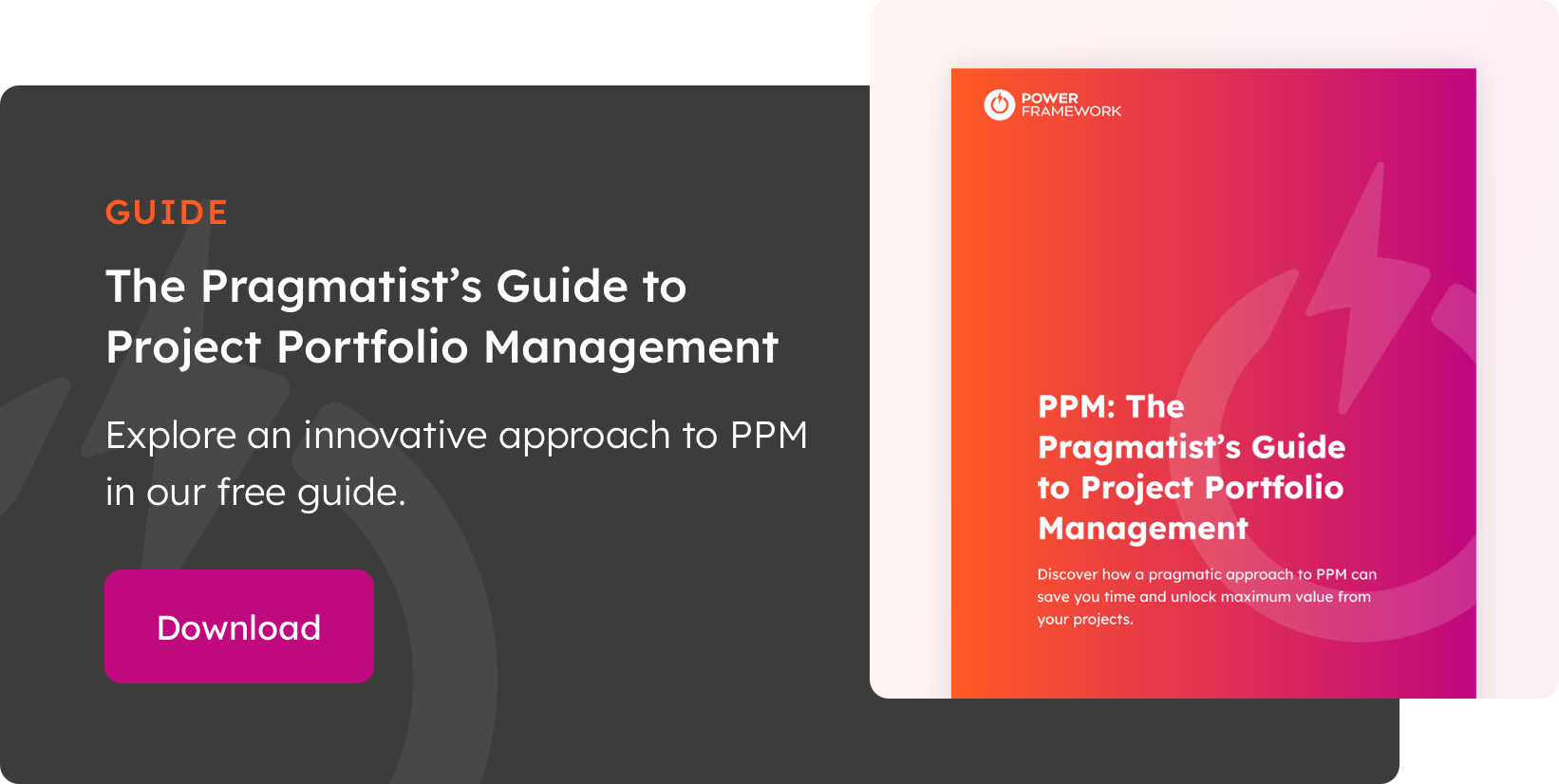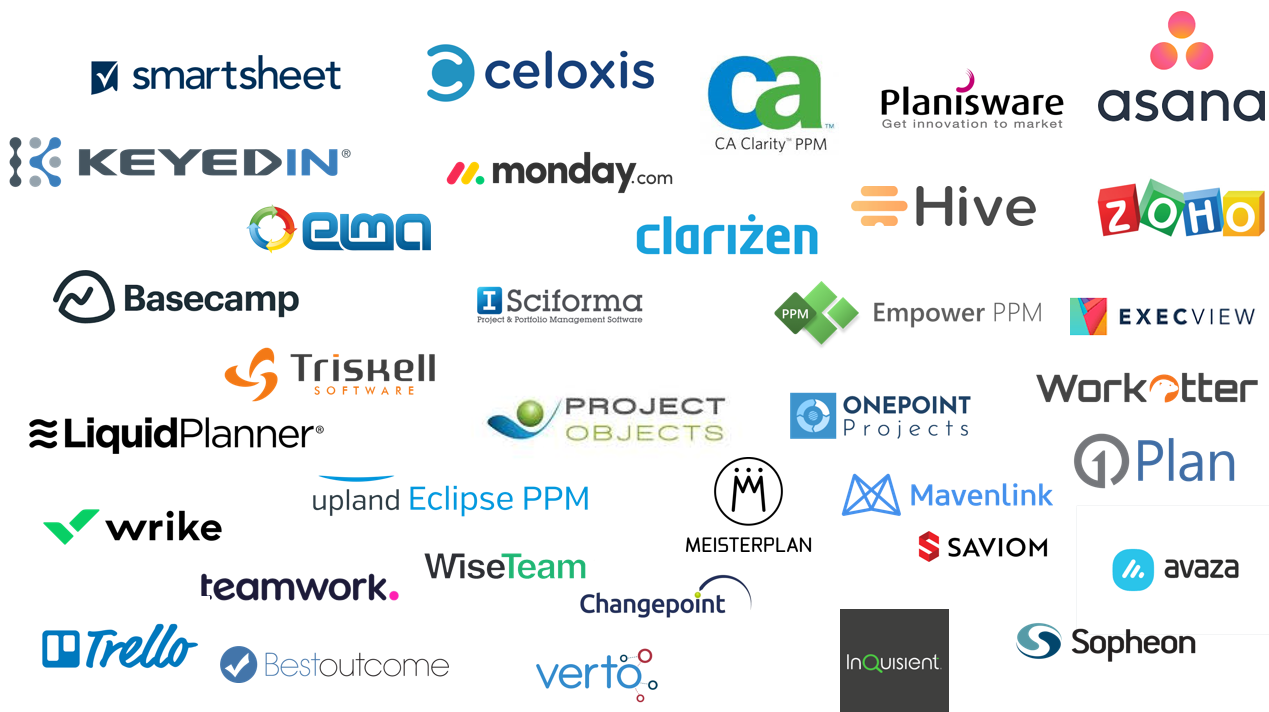Implementing an enterprise project portfolio management (PPM) tool is a watershed moment for your organisation. It marks the turning point when your portfolio becomes too large or intricate to handle with static spreadsheets and reports alone.
Before you can start reaping the rewards of your new solution, you need to prepare the ground. That means understanding what a PPM tool is, when to get one, and how to build your business case to get stakeholder buy-in.
What is a PPM tool?
A PPM tool combines the planning, organisational, and delivery capabilities of project management tools with the connectivity and data management features of modern collaboration platforms in one solution.
Serving as a central repository for your data, a PPM tool provides the portfolio-wide visibility you need to manage and coordinate multiple projects simultaneously. This includes everything from reviewing cross-project dependencies and monitoring budgets to measuring performance to ensure your portfolio aligns with your wider organisational goals.
Popular PPM tools include:
- Microsoft Project Solutions
- Asana
- Planview
- Smartsheet
- Wrike
Why you need a PPM tool
Managing a project portfolio without a PPM tool is a bit like herding cats.
Using disconnected documents and spreadsheets, rather than a centralised system, makes it difficult to track resources, budgets, dependencies, and risks. Errors creep in, increasing the likelihood of project delays and cost overruns. And without BI tools to analyse project data, you lack the necessary insight for effective strategic planning.
By contrast, a PPM tool provides a range of applications that benefit different roles across your organisation. Project managers can schedule activities and allocate resources, while portfolio managers can manage utilisation, capacity, bottlenecks, priorities, and more.
However, there are several universal benefits you can expect from your PPM tool:
- Save time. Built-in automation lets you quickly create workflows that eliminate manual data entry and reduce administrative overheads.
- Improve resource allocation. Track resources from one place so you can allocate the right resources to the right projects at the right level to minimise resourcing issues.
- Stay on top of costs. Portfolio-wide visibility helps you monitor finances and spot errors faster to prevent issues.
- Enhance decision-making. Accurate, real-time business intelligence allows you to make decisions based on data, not assumptions or gut feelings.
- Boost collaboration. Consistent data, processes, and built-in collaboration tools enable teams to work effectively from anywhere.
- Increase compliance. Centralise business policies and share them with teams to ensure compliance across your portfolio.
- Power business strategy. With all project data in one place, you can prioritise the projects that best align with and support your strategic goals.
PPM tools in action
The University Hospitals of Leicester NHS Trust invested in a Microsoft PPM tool to support its ambitious £450m hospital reconfiguration and building programme. With a huge volume of new reporting requirements to consider, the team realised it needed to update its protracted and error-prone manual processes to achieve its vision.
Implementing a Microsoft PPM tool established a single source of truth for the UHL’s project data, helping to streamline internal processes and enhance collaboration across the trust.
When should you get a PPM tool?
There's never a bad time to invest in a PPM software. There are no minimum requirements, and you don't need a big budget. Modern PPM tools are flexible. You can start with basic functionality and add new features as your organisation matures.
That said, there are some tell-tale signs you're ready for an enterprise PPM tool:
- You’re responsible for numerous complex projects.
- You’re stuck in ‘spreadsheet hell’, meaning you use disconnected spreadsheets, documents, and tools to manage your projects.
- You spend much of your time manually pasting data into reports.
- You struggle to track projects, allocate resources, and manage finances efficiently across your portfolio.
- You have the budget and motivation to invest in specialist solutions and support.
- You’ve established clear ownership of your PPM processes and identified the tools you need to take your organisation forward.
How to make a compelling business case
Like any investment, you need a strong business case to show leadership the benefit of investing in a PPM tool. It should demonstrate the value of your chosen solution, helping you to secure the budget you need to implement it.
There are seven steps to building a business case for a PPM tool:
1. Write your problem statement
Outline the current challenges and pain points your proposed solution solves. This requires input from stakeholders across your organisation.
2. State your objectives
Explain what you aim to achieve with your new PPM tool and how you intend to measure progress towards these goals.
3. Highlight the benefits
List the benefits the organisation can expect from the solution. Enabling data-driven project decisions, more effective resource allocation, reducing risks etc.
4. Break down the costs
Outline the costs associated with PPM tool implementation to give leadership clarity on how much the solution will cost.
5. Show the financial benefits
Calculate the potential cost savings they can expect from your new PPM tool, thanks to greater visibility and more efficient processes.
6. Create a timeline
Separate the project into clear stages to show leadership how long the project will take from approval to implementation.
7. Analyse risks
Conduct a thorough risk analysis to identify potential risks and create mitigation strategies to minimise their impact.
Measure twice, cut once
There are many do’s and don’ts of successful PPM tool implementation. Your choices now could have long-term ramifications for your PPM tool's success (or failure).
Take the time to consider your challenges, identify your needs, weigh up your options, and build a solid business case to prepare properly for your PPM tool. This gives you the best chance of starting your project on the right foot.
This is part one in a trio of blogs. Come back soon for part two, when we list our top tips for a successful PPM tool implementation.
Join the conversation with our PPM software experts on LinkedIn.




